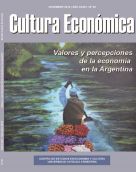Corporate social responsibility and corporate performance : the economic costs and benefits of CSR
Keywords:
Corporate Social Responsibility, Corporate Performance, Civil Economy, Common Goods, SustainabilityAbstract
This paper looks at the relation between corporate social responsibility and corporate performance, using the theoretical framework of Civil Economy. Common goods theory is also studied. They are used to look at how to enhance pro-social behavior at micro level and to give the theory to present later some frameworks and approaches applied throughout different business sectors that show that CSR can be profitable from a profit maximizing perspective. Other findings are that although this different way of doing business may present additional costs in short-term analysis, it also presents benefits as well as opportunities for creativity and innovation in the long run. Several examples are studied to see how reciprocity can be stimulated to create well-being and public happiness. These are: “Manchester Building Schools for the Future” (BSF) programme, Nike, Kimberley-Clark, Pixar, Heathrow Airport Terminal 5, Wal-Mart, Dow Chemical, Marks & Spencer’s, and Johnson & Johnson. Some suggestions for long-term business sustainability are put forward at the end of the work.Downloads
References
Appelo, J. (2010). “Management 3.0: Leading Agile Developers, Developing Agile Leaders”. Administración 3.0: Liderando desarrolladores Agile, Desarrollando Líderes Agile. AddisonWesley, USA.
Baldwin, C.Y. (2012). “Organization Design for Business Ecosystems”, Journal of Organizational Design, 1(1):20-23.
Baldwin, C.Y. and Clark, K.B. (2004). “Modularity in the Design of Complex Engineering Systems”, en Harvard Business School. http://www.people.hbs.edu/ cbaldwin/dr2/baldwinclarkces.pdf. Último acceso: diciembre 2016.
Becchetti, L., Federico, G., and Solferino, N.(2005). “The Game of Social Responsibility: Pioneers, Imitators and Social Well-being”, Artículo de Trabajo Nº 15, Curso de Postgrado en Economía de la Empresa Cooperativa de la ONP, Facoltà di Economía, Università di Bologna,
Sede di Forlí. www.aiccon.it/working_paper.cfm. Último acceso: diciembre 2016.
Becchetti, L., Ciciretti, R., Hasan, I., and Kobeissi, N. (2011). “Corporate social responsibility and shareholder’s value”, Journal of Business Research, 65:1628-1635.
Becchetti, L., Bruni, L., and Zamagni, S. (2014). Microeconomia. Un testo di economia civile (2ª edición). Il Mulino, Bologna.
Bruni, L. and Zamagni, S. (2015). L’economia civile. Il Mulino, Bologna.
Browne, J. and Nuttall, R. (2013). “Beyond Corporate Social Responsibility: Integrated External Engagement”, McKinsey Insights.
http://www.mckinsey.com/insights/strategy/beyond_corporate_social_responsibi lity_integrated_external_engagement9. Último acceso: diciembre 2016.
Calvo, P. (2013). “Fundamentos de la economía civil para el diseño de las organizaciones”, Revista Internacional de Organizaciones, 10:65-84.
Catmull, E. (2008). “How Pixar Fosters Collective Creativity”, Harvard Business Review. https://hbr.org/2008/09/how-pixar-fosters-collective-creativity. Último acceso: diciembre 2016.
Frey, B.S. and Stutzer, A. (2002). “The Economics of Happiness”, World Economics, 3(1).
Gil, N. and Tether, B.S. (2012). “Project risk management and design flexibility: Analysing a case and conditions of complementarity”,
Research Policy, 40: 415–428.
Gil, N. and Baldwin, C.Y. (2014). “Sharing Design Rights: A Commons Approach for Developing Infrastructure”, Artículo de Trabajo 14-025, Harvard Business School. http://www.hbs.edu/faculty/Publication%2
Files/14-025_59aa690e-2f16-4f9a-8dbe857b00cdfe80.pdf Último acceso: diciembre 2016.
Kimberley-Clark Professional (2015). The Continuous Improvement Hub http://www.kcprofessional.com/solutions/continuousimprovement. Último acceso: diciembre 2016.
Kuehn, K. and McIntire, L. (2014). “Sustainability a CFO Can Love”, Harvard Business Review. https://hbr.org/2014/04/sustainability-acfo-can-love. Último acceso: diciembre 2016.
Lindner, M (2010). “Super Savings For Kimberly-Clark”, Revista Forbes. http://www.forbes.com/2010/03/22/kimberly-clarkkleenex-markets-equities-proctor-and-gamble-thomas-falk-closer.html. Último acceso:
diciembre 2016.
Nike, Inc. (2013), CR Report FY12/13. http://www.nikeresponsibility.com/report/. Último acceso: diciembre 2016.
Ostrom, E., Burger, J., Field, C.B., Norgaard, R.B., and Policansky, D. (1999). “Revisiting the Commons: Local Lessons, Global Challenges”, en Science, 284:278-282.
Ostrom, E. (2010). “Beyond Markets and States: Polycentric Governance of Complex Economic Systems”, American Economic Review, 100:641–672.
Porter M.E. and Kramer M.R. (2011). “Creating Shared Value”, en Harvard Business Review https://hbr.org/ 2011/01/the-big-idea-creating-shared-value. Último acceso: diciembre 2016.
Rapti E. and Medda, F. (2010). “Corporate Social Responsibility and Financial Performance in the Airport Industry”, Artículo de Trabajo,
Quantitative & Applied Spatial Economic Research Laboratory (QASER), University College London.
Ries, E. (2011). The Lean Startup: How Today’s Entrepreneurs Use Continuous Innovation to Create Radically Successful Businesses. Crown Business, New York.
Ryan, R.M. and Deci, E.L. (2000). “Intrinsic and Extrinsic Motivations: Classic Definitions and New Directions”, en Contemporary Educational Psychology, 25: 54–67.
Sen, A. (1977). “Rational Fools: A Critique of the Behavioral Foundations of Economic Theory”, en Philosophy & Public Affairs, 6(4):317-344.
Womack, D.T. and Jones, J.P. (2006). Lean Thinking: Banish Waste and Create Wealth in Your Corporation (2ª Edición). Free Press, New York.
Zamagni, S. (2012). Por una Economía del Bien Común. Ciudad Nueva, Madrid.
Downloads
Published
How to Cite
Issue
Section
License













